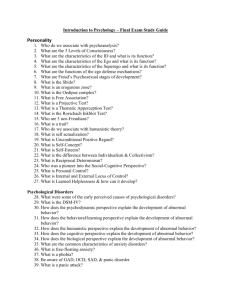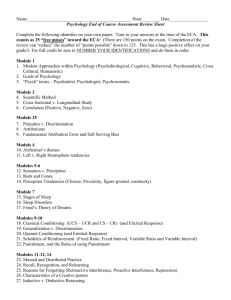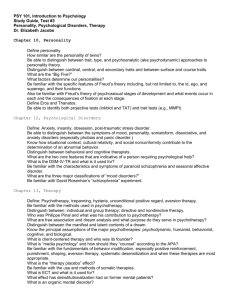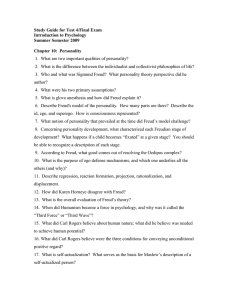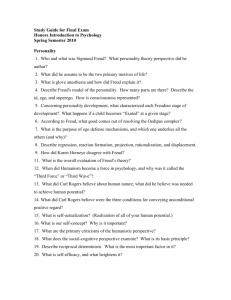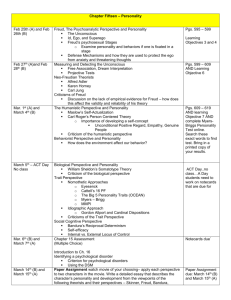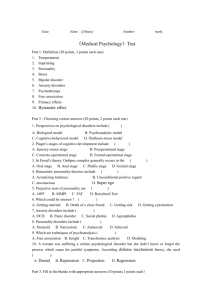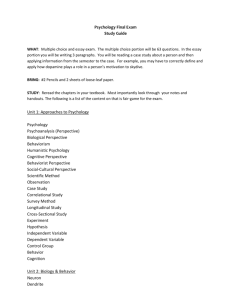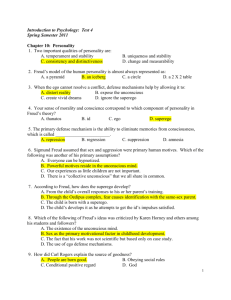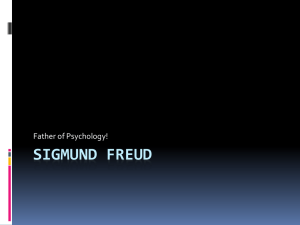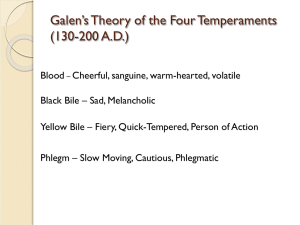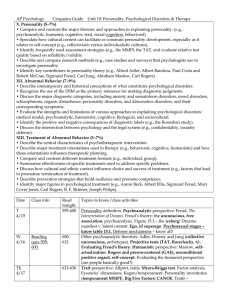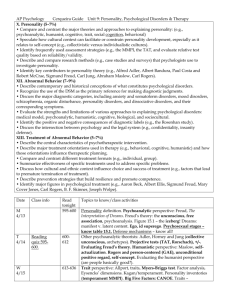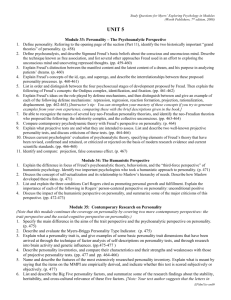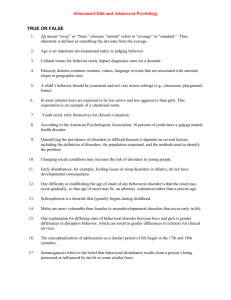Introduction to Psychology – Test 4 Study Guide Chapter 13
advertisement
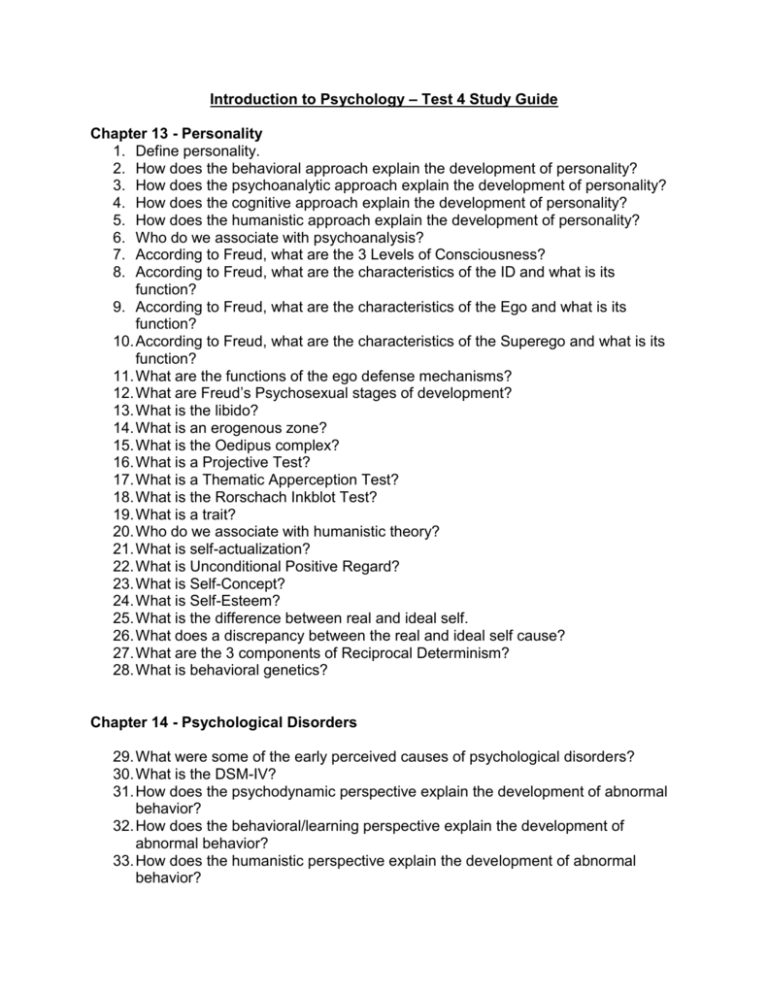
Introduction to Psychology – Test 4 Study Guide Chapter 13 - Personality 1. Define personality. 2. How does the behavioral approach explain the development of personality? 3. How does the psychoanalytic approach explain the development of personality? 4. How does the cognitive approach explain the development of personality? 5. How does the humanistic approach explain the development of personality? 6. Who do we associate with psychoanalysis? 7. According to Freud, what are the 3 Levels of Consciousness? 8. According to Freud, what are the characteristics of the ID and what is its function? 9. According to Freud, what are the characteristics of the Ego and what is its function? 10. According to Freud, what are the characteristics of the Superego and what is its function? 11. What are the functions of the ego defense mechanisms? 12. What are Freud’s Psychosexual stages of development? 13. What is the libido? 14. What is an erogenous zone? 15. What is the Oedipus complex? 16. What is a Projective Test? 17. What is a Thematic Apperception Test? 18. What is the Rorschach Inkblot Test? 19. What is a trait? 20. Who do we associate with humanistic theory? 21. What is self-actualization? 22. What is Unconditional Positive Regard? 23. What is Self-Concept? 24. What is Self-Esteem? 25. What is the difference between real and ideal self. 26. What does a discrepancy between the real and ideal self cause? 27. What are the 3 components of Reciprocal Determinism? 28. What is behavioral genetics? Chapter 14 - Psychological Disorders 29. What were some of the early perceived causes of psychological disorders? 30. What is the DSM-IV? 31. How does the psychodynamic perspective explain the development of abnormal behavior? 32. How does the behavioral/learning perspective explain the development of abnormal behavior? 33. How does the humanistic perspective explain the development of abnormal behavior? 34. How does the cognitive perspective explain the development of abnormal behavior? 35. How does the biological perspective explain the development of abnormal behavior? 36. What are the common characteristics of anxiety disorders? 37. What is free-floating anxiety? 38. What is a phobia? 39. Be aware of GAD, OCD, SAD, & panic disorder. 40. What is a panic attack? 41. What are the somatoform disorders? 42. What are the dissociative disorders? 43. What are the mood disorders? 44. What are the types of schizophrenia? 45. What types of delusions might a person experience? 46. What are hallucinations? 47. What is the difference between positive and negative symptoms in schizophrenia? 48. How is schizophrenia different from Dissociative Identity Disorder? 49. What are the characteristics of a person diagnosed with Antisocial Personality Disorder? 50. What are the characteristics of a person diagnosed with Borderline Personality Disorder? Chapter 15 - Therapy 51. What is Psychotherapy? 52. What is meant by the Eclectic Approach? 53. What is the therapeutic goal of Psychoanalysis? 54. What is free association? 55. In psychoanalysis, what is Resistance? 56. What is the therapeutic goal of Humanistic Therapy? 57. What are the techniques of Roger’s Person-Centered Therapy? 58. What is the therapeutic goal of Gestalt Therapy? 59. What is the therapeutic goal of Behavioral Therapy? 60. What is Counterconditioning? 61. What is Systematic Desensitization? 62. What is Aversion therapy/conditioning? 63. What is the Token Economy? How is it similar to a chore chart? 64. What is the therapeutic goal of Cognitive Therapy? 65. What is Cognitive-Behavior Therapy? 66. What do the A,B,C,D,& E stand for in Rational Emotive Therapy? 67. Be able to identify the ABC’s in a scenario such as: After Bruce lost his job he describes himself as a failure and has been depressed for 4 months. 68. What is electroconvulsive shock therapy?
